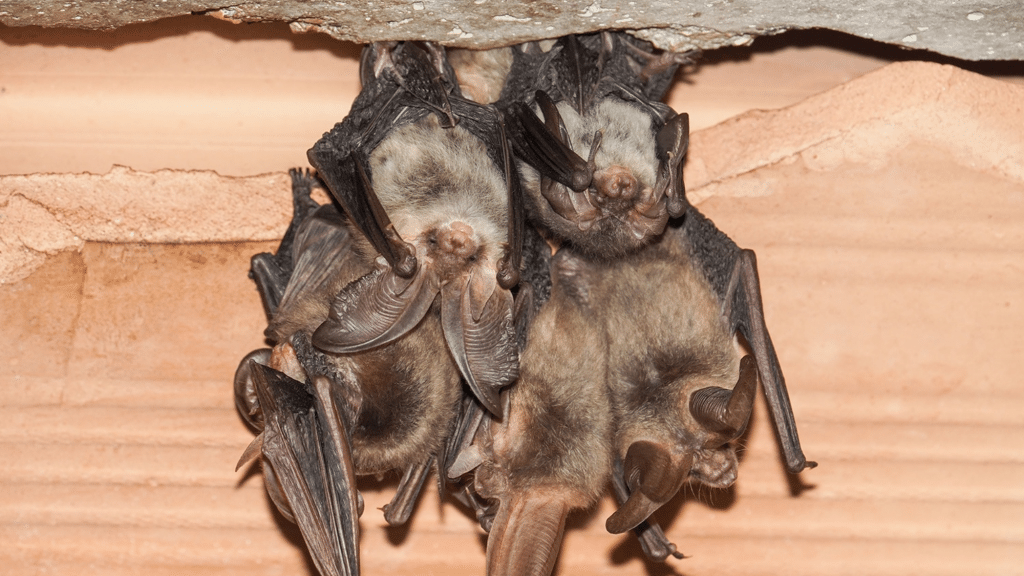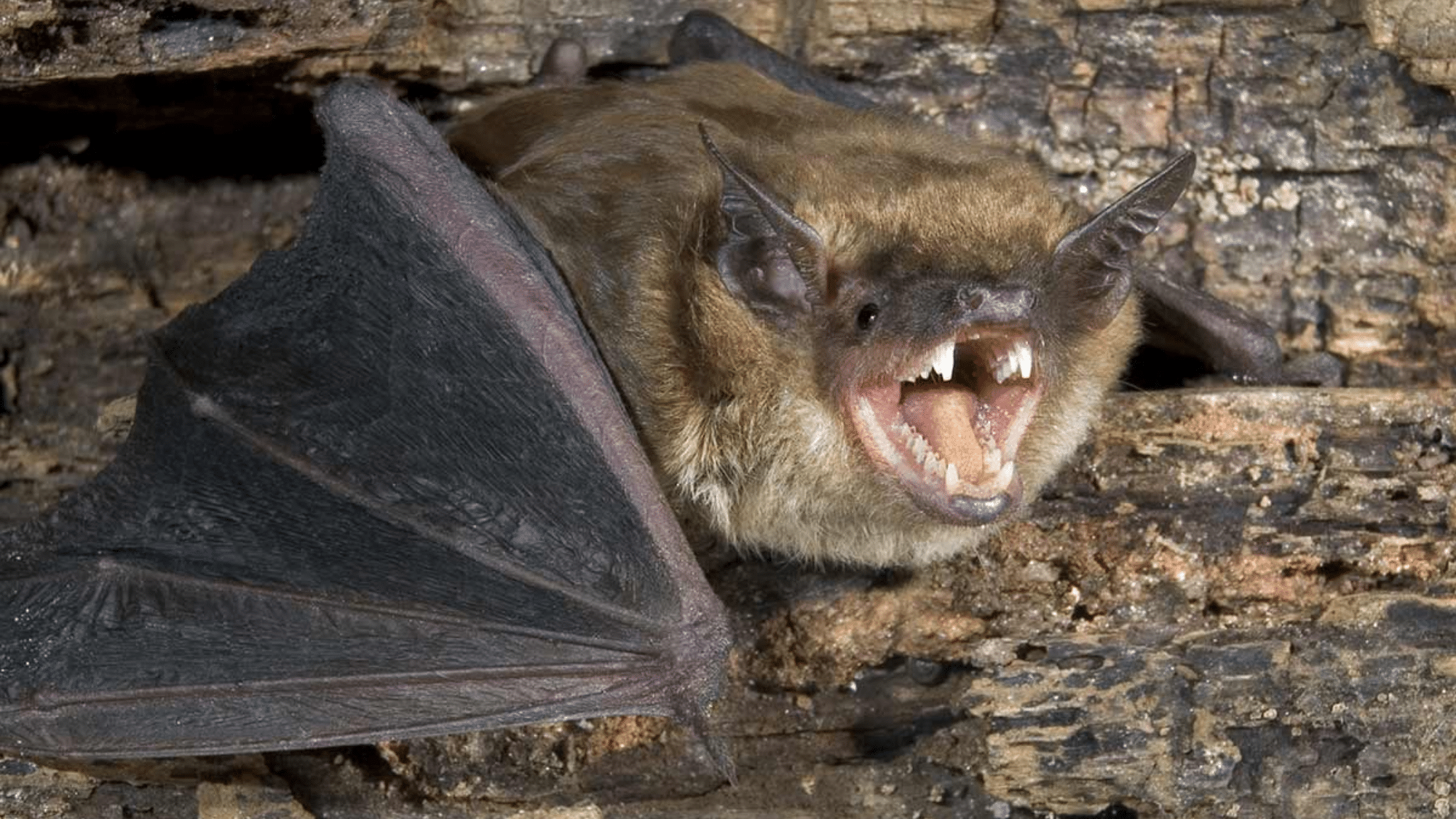Are you hearing strange noises in your attic at night or noticing droppings around your home?
You might be dealing with a bat infestation. Bats are engaging creatures, but when they make their way into your living space, they can cause damage and pose health risks. If you’re wondering how to handle a bat infestation, you’re in the right place.
In this blog, we’ll guide you through the signs of a bat problem, the dangers they present, and most importantly, how to safely and effectively get rid of them.
Keep reading to learn more about protecting your home from these winged intruders.
Understanding Bat Behaviour
To manage or prevent infestations, it helps to understand how bats behave, where they roost, and how they interact.
| Characteristic | Description |
|---|---|
| Size | Varies by species; typically between 2.5 to 16 inches in wingspan. |
| Weight | Ranges from 0.1 to 2.5 ounces, depending on the species. |
| Behavior | Mostly nocturnal; roost in dark, secluded places like attics, caves, or trees. |
| Hunting Habits | Bats are insectivores, hunting using echolocation to track prey in the dark. |
| Communication | Use high-frequency echolocation calls for navigation and communication. |
| Mating Habits | Mating seasons vary; some species mate in fall, with delayed fertilization until spring. |
Signs of a Bat Infestation
Recognizing the presence of bats early allows for more timely and effective management. Here are the telltale signs to watch for:
1. Visual Evidence
Bats themselves are the most obvious indicator, typically spotted at dusk when they emerge to feed or at dawn when they return.
You might observe them flying near your roofline or swooping around your property. Inside, you might encounter a disoriented bat that’s accidentally entered your living space.
2. Bat Guano (Droppings)
Bat droppings accumulate beneath roosting areas and entry points. Unlike rodent droppings, bat guano appears dark and crumbly, containing visible insect parts that sparkle when broken apart.
Substantial accumulations often occur near entry points or below roosting areas.
3. Staining and Odor
Bats leave brownish-black oil stains from their fur around entry points. Over time, urine accumulation creates a distinctive musty, ammonia-like odor that grows stronger with colony size.
Additionally, you may notice discoloration on walls or ceilings beneath roosting areas, as bat urine can seep through insulation and building materials, creating yellowish-brown stains that expand over time.
4. Sounds
Listen for scratching, squeaking, or chirping sounds coming from walls, ceilings, or the attic, particularly around sunset or sunrise. These sounds emerge during the breeding season when pups become more vocal.
The noise volume typically correlates with colony size, so light scratching might indicate a small number of bats, while substantial chattering suggests a well-established colony that requires prompt professional attention.
5. Secondary Signs
Unexplained insect reduction around your property (bats consume thousands of insects nightly), pets focusing attention on ceiling areas, or unexplained staining appearing on walls or ceilings can all indicate bat presence.
You might also notice accumulations of small, dark insect wings near your home’s exterior, as bats often remove wings before consuming their prey.
Health Risks and Concerns
Even minimal exposure to bats or their waste can lead to serious health and structural issues—here’s what you need to know.
- Rabies Risk: Less than 1% of bats carry rabies, but any direct contact requires medical attention, as bites may be unnoticeable.
- Histoplasmosis: Fungal spores in bat guano cause respiratory disease when inhaled, especially dangerous for immunocompromised individuals.
- Parasites: Bat bugs, mites, and ticks may remain after bats leave, occasionally biting humans.
- Allergic Reactions: Airborne particles from dried bat waste trigger asthma and allergic responses in sensitive individuals.
- Structural Concerns: Accumulated waste deteriorates building materials, causing staining and persistent odors.
Finding Entry Points
Identifying how bats are getting in is the first step to safe and effective removal. Here’s how to track down their access points.
| Action | Details |
|---|---|
| Dusk Watch | Observe 30 minutes before sunset for emerging bats, focusing on roofline exits. Count bats to estimate colony size. |
| Look for Physical Evidence | Check for brown staining, guano, lack of cobwebs, or scratch marks near openings. |
| Common Entry Locations | Gaps at roof-walls, uncapped chimneys, damaged shingles, unscreened vents, gaps around pipes/wiring, and deteriorated soffits. |
| Documentation | Photograph and note all entry points, including those as small as 3/8 inch. |
Prevention Strategies
After resolving an existing infestation, implement these strategies to prevent future bat problems:
Seal Potential Entry Points:
- Fill cracks larger than 1/4 inch in foundations, walls, and rooflines.
- Install proper chimney caps and vent screens (using 1/4-inch hardware cloth).
- Repair damaged soffits, fascia boards, and roof tiles.
- Seal gaps around pipes, cables, and utility penetrations.
- Use appropriate materials like expanding foam, hardware cloth, or caulk for different areas.
Regular Maintenance:
- Conduct bi-annual inspections of your home’s exterior.
- Check the attic and crawl spaces periodically for signs of bat activity.
- Maintain chimney and vent covers.
- Replace deteriorating wood or siding promptly.
- Trim tree branches that provide roof access for bats.
Environmental Modifications:
- Reduce outdoor lighting that attracts insects (and consequently bats).
- Consider motion-sensor lights instead of constant illumination.
- Maintain healthy insect populations away from your home to provide natural food sources in appropriate areas.
Professional Assessment: Consider an annual inspection by a wildlife professional who specializes in bat exclusion, especially if you’ve had previous infestations or live in a bat-prone area.
Interesting Facts
Beyond the myths and mysteries, bats are interesting creatures with incredible abilities and surprising benefits to our world.
- Bats eat up to 1,200 mosquito-sized insects per hour, aiding pest control.
- Only mammals capable of true flight, with wings four times larger than birds of similar size.
- Some bats can live over 30 years, among the longest-lived mammals for their size.
- Echolocation allows bats to detect objects as thin as a human hair in total darkness.
- Over 500 plant species, including bananas and agave, rely on bats for pollination.
- Bat saliva contains draculin, used in medications for stroke patients.
- Bats have good vision but rely on echolocation for efficient hunting in the dark.
- Bats reproduce slowly, with most species having one pup per year, which makes them vulnerable.
Conclusion
Addressing a bat infestation requires prompt action balanced with ethical considerations.
Remember that timing is critical—avoid removal during maternity season when pups are present or during hibernation periods. Once bats are gone, thorough cleanup and preventative measures will ensure they don’t return.
While challenging, handling the situation properly protects both your family’s health and these ecologically important mammals.
With patience and the right approach, your home can remain bat-free while these remarkable animals continue their vital role in our ecosystem.






















